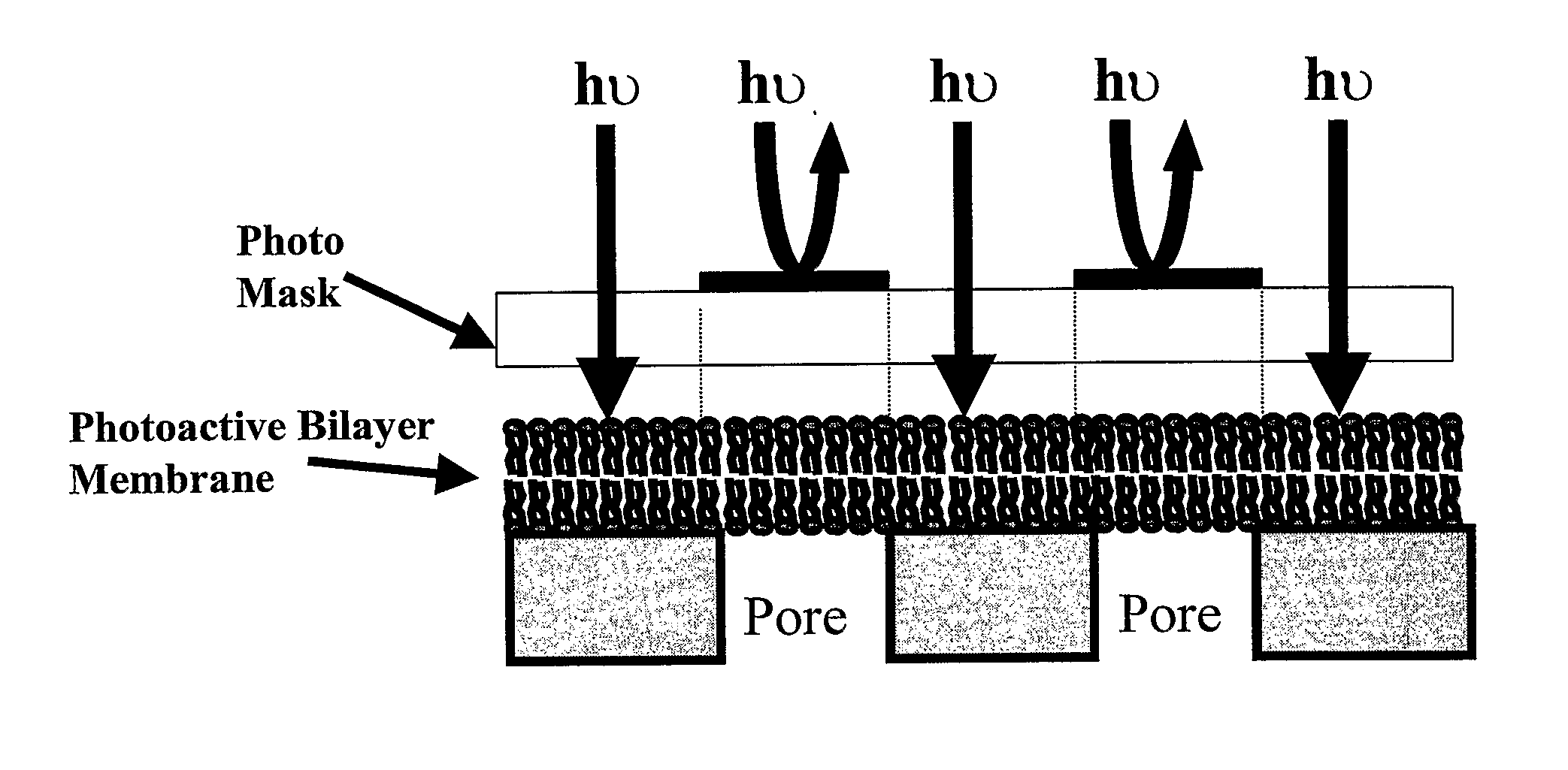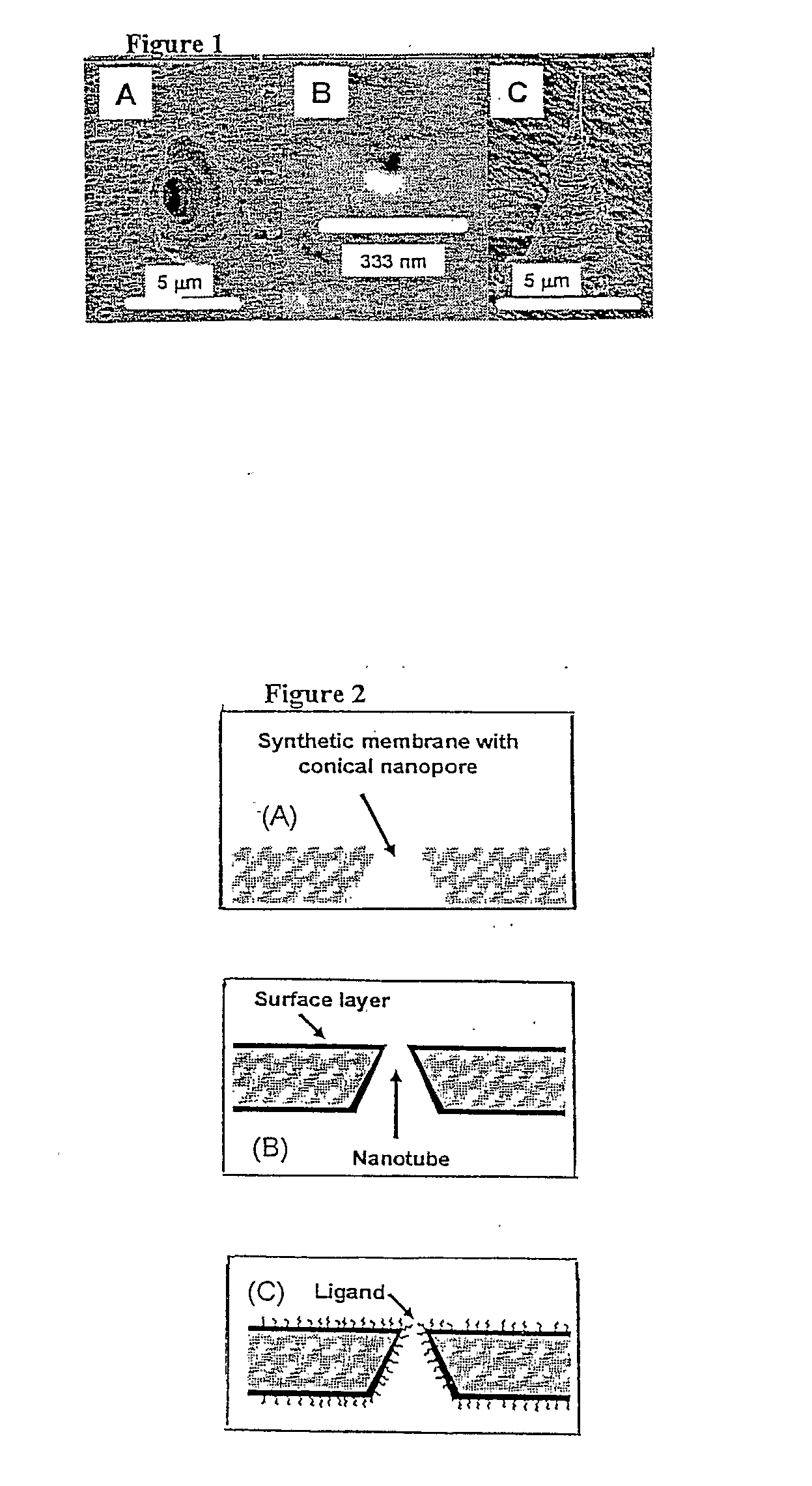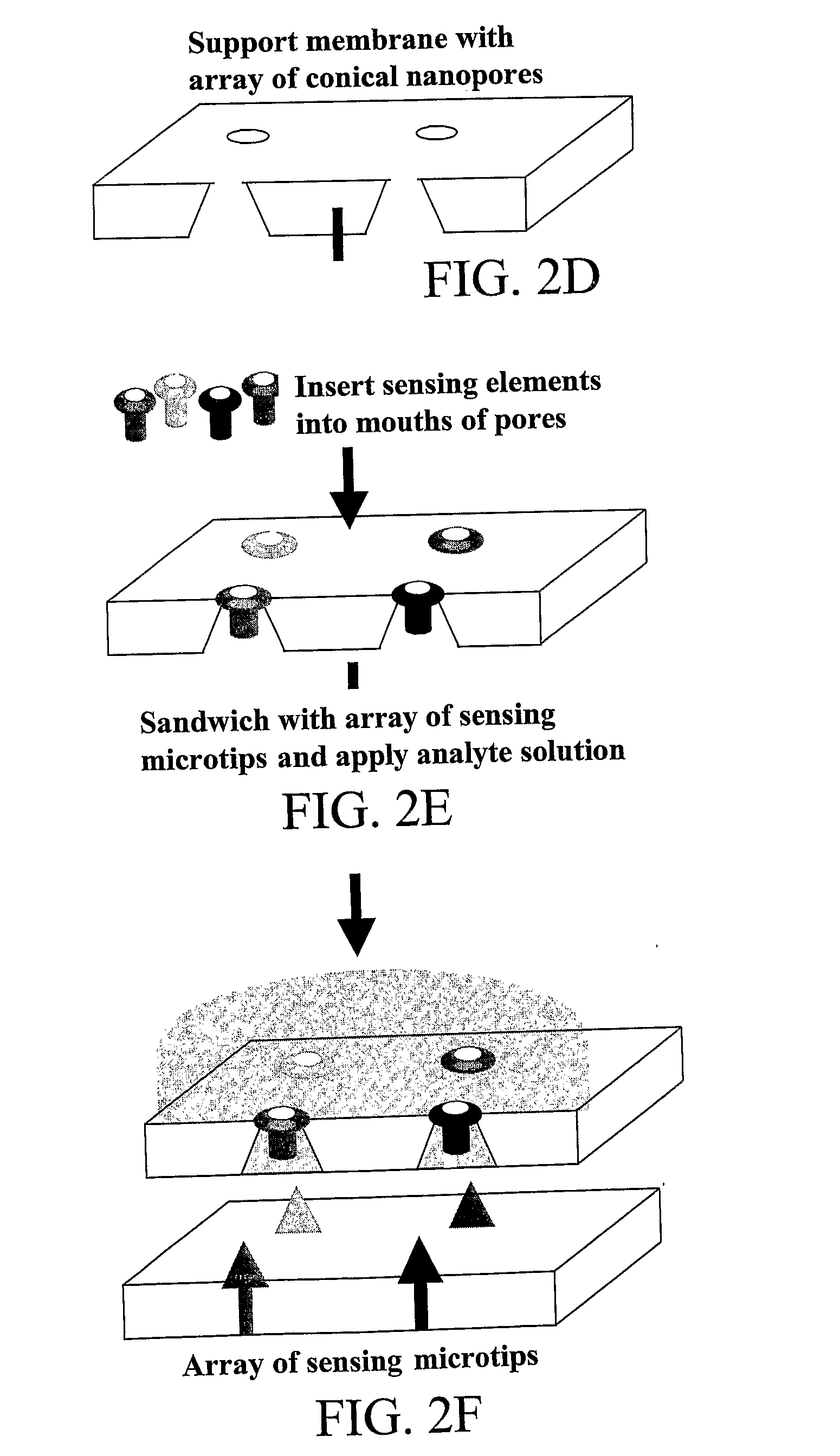Chemical, Particle, and Biosensing with Nanotechnology
a nanotechnology and biosensing technology, applied in the field of particle, chemical and biomolecule sensing, can solve the problems of inability to detect analytes with a high degree of sensitivity and/or specificity, and the majority of these systems and devices are relatively expensive, etc., to achieve the effect of low manufacturing cost, stable, and easy preparation of nanosensing systems
- Summary
- Abstract
- Description
- Claims
- Application Information
AI Technical Summary
Benefits of technology
Problems solved by technology
Method used
Image
Examples
example 1
pH-Based Sensing System
[0145] In one embodiment, a nano-based sensing system of the present invention detects the presence of a target analyte via an assay means that observes a change in pH. The assay means of the invention translates a change in pH into a change in the current-voltage curve, which communicates to the user the presence of the target analyte. Such sensing system is particularly advantageous for use in measuring different concentrations of target analytes in any given sample medium.
[0146] In this example, the membrane is a polyethylene terephthalate (PET) film within which a single conical nanochannel was functionalized with a gold lining. The large (base) diameter opening of the nanochannel was about 0.6 μm and the small (tip) diameter opening was about 30 nm. An electroless plating method was used to deposit a corresponding the gold lining within the PET conical nanochannel. Because the gold (or Au) lining was so thin, the large diameter opening of the gold-lined...
example 2
Biocompound-Based Sensing System (Biotin)
[0152] In this example, the present invention uses a membrane with a gold-lined nanochannel and at least one molecular recognition agent attached to the gold-lined nanochannel walls, where the molecular recognition agent responds selectively to a protein. The gold-lined nanochannel had a small (tip) diameter opening of about 5 nm and a large (base) diameter opening of about 0.6 μm. The molecular recognition agent attached to the gold lining was the biomolecule biotin. Attachment to the gold lining was accomplished using a commercially available biotin molecule having a thiol functionality. Biotin binds with high specificity and strength to the protein Streptavidin (SA). Hence, in this example SA is the target analyte.
[0153] The membrane with the gold-lined nanochannel functionalized with biotin was mounted between the two halves of a conductivity cell, and each half-cell was filled with about 1.7 mL of a 1M phosphate buffer solution (pH=4.5...
example 3
Biocompound-Based Sensing System (Protein G)
[0172] According to one embodiment of the invention, the sensor system comprises a nanochannel lined with gold and having a protein ligand (molecular recognition agent) attached to the gold lining of the nanochannel. The ligand was selected such that it responded selectively to a protein that binds to the ligand. In Example 2 above, the ligand biotin that selectively binds to the analyte SA was a small molecule. As illustrated in FIG. 8, the ligand may also be a protein. In this Example 3, the ligand was a protein, protein G. The particular protein G used in this example binds strongly to immunoglobulin G (IgG, an antibody) obtained from horse blood. Accordingly, the target analyte for the sensor system of Example 3 was the specific protein horse IgG.
[0173] The gold-lined nanochannel had two openings at the tip and base, a small-diameter tip opening of 4 nm and a large-diameter base opening of 0.6 μm. The gold-lined nanochannel is prefer...
PUM
| Property | Measurement | Unit |
|---|---|---|
| Thickness | aaaaa | aaaaa |
| Concentration | aaaaa | aaaaa |
| Sensitivity | aaaaa | aaaaa |
Abstract
Description
Claims
Application Information
 Login to View More
Login to View More - R&D
- Intellectual Property
- Life Sciences
- Materials
- Tech Scout
- Unparalleled Data Quality
- Higher Quality Content
- 60% Fewer Hallucinations
Browse by: Latest US Patents, China's latest patents, Technical Efficacy Thesaurus, Application Domain, Technology Topic, Popular Technical Reports.
© 2025 PatSnap. All rights reserved.Legal|Privacy policy|Modern Slavery Act Transparency Statement|Sitemap|About US| Contact US: help@patsnap.com



